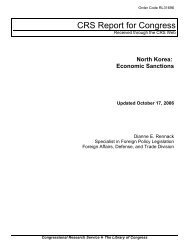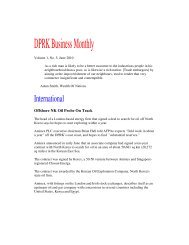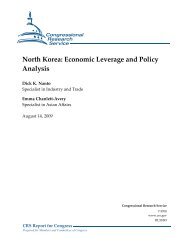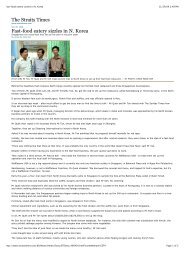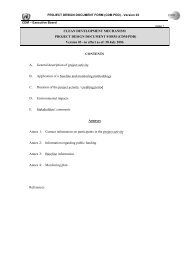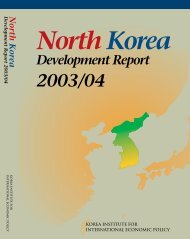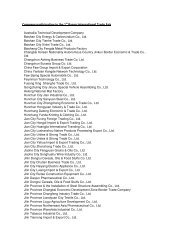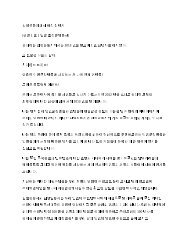North Korean Policy Elites - Defense Technical Information Center
North Korean Policy Elites - Defense Technical Information Center
North Korean Policy Elites - Defense Technical Information Center
You also want an ePaper? Increase the reach of your titles
YUMPU automatically turns print PDFs into web optimized ePapers that Google loves.
state-owned enterprises (SOEs), (7) advancement of plans for the securitization of assets<br />
(“chaebolization”) of large state-owned combines, (8) termination of the bulk of state subsidies<br />
to the SOEs, introduction of a self-accounting and profit-based system at SOEs, and movement<br />
from mandatory to indicative central planning at SOEs, (9) contracting an overseas investment<br />
bank to draw up plans for national banking reform, and (10) innovative government debt<br />
financing through T-bond issuance, and others.<br />
Overall, Kim Jong Il attempted to re-build the <strong>North</strong> <strong>Korean</strong> state and implement a<br />
relatively ambitious domestic modernization agenda, using the military as the primary driving<br />
force in restructuring and modernizing the <strong>North</strong> <strong>Korean</strong> economy on the basis of the marketbased<br />
approach, re-energizing the <strong>North</strong> <strong>Korean</strong> society, and consolidating the ruling elites under<br />
the slogans of the army-first policy with the goal of building a “prosperous powerful great<br />
nation” (kangsong taeguk). He clearly was driven by the self-preservation instinct, not Marxist-<br />
Leninist or Juch’e ideology. His “new thinking” (saesago pangsik) developed within the<br />
normative, organizational, and personnel constraints imposed by his father’s legacy against the<br />
background of the worsening domestic legitimacy and performance crises during the trial years<br />
of the “arduous march” (konanui haenggun). It is very important that the strategic decision to<br />
initiate the modernization reforms was a military-backed decision. Without the support of the top<br />
military leaders, Kim Jong Il alone could not have made a strategic decision to launch economic<br />
reforms. He needed the military support for his catch-up modernization drive, and he got it.<br />
Moreover, it is noteworthy that in 2003, the socio-economic reforms and political<br />
decompression were not reversed but further advanced, despite an increasingly hostile<br />
international environment and the nuclear stalemate with the United States. Such policy<br />
continuity can be construed either as a sign that the reforms are generating positive feedback and<br />
may be approaching the point of no return, or that the national leadership may not necessarily<br />
have complete control over and cannot help but swim along with the new social and macroeconomic<br />
processes and micro-economic behaviors originated in the late 1990s and formally<br />
legalized in July 2002.<br />
In the past five years, the overwhelming process of late modernization began to change<br />
the substance of <strong>North</strong> <strong>Korean</strong> politics, create new social and political divisions in <strong>North</strong> <strong>Korean</strong><br />
society, expand the policy issue areas, and propel new social forces, corporate concerns, and<br />
interest groups into the policy-making arena at the expense of the previously ubiquitous faceless<br />
class struggle for the construction of socialism with Juch’e characteristics under the WPK party<br />
leadership centered on the “party headquarters.” The issues that are the most important for the<br />
increasingly pragmatic and nationalistic leadership in Pyongyang today are regime security and<br />
power succession, economic reforms and defense modernization, national reconciliation and<br />
IV-12



